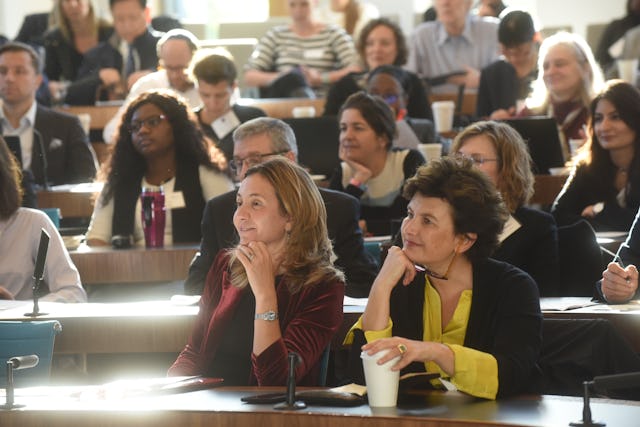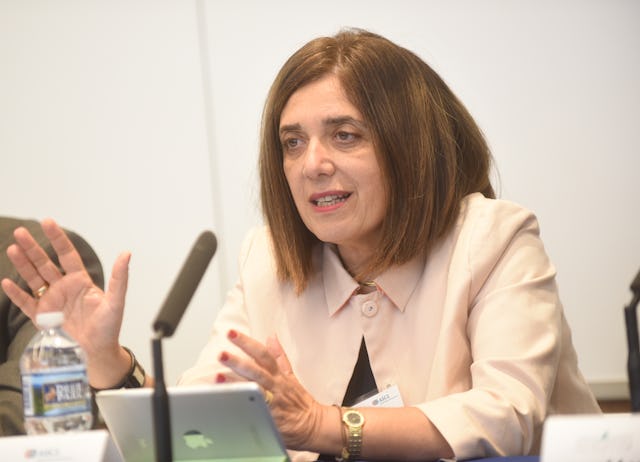Law conference highlights atrocities against religious minorities
WASHINGTON D.C. — Why does it take unimaginable atrocities against religious minorities for the world to respond?
“The question requires us to look at the way we deal with oppression today,” stated Diane Ala’i, representative of the Baha’i International Community United Nations Office in Geneva, at a panel discussion on freedom of religion or belief at the Annual Meeting of the American Society of Comparative Law (ASCL) in Washington, D.C., held 26-28 October.
Ms. Ala’i pointed to the mechanisms at the UN that aim to defend religious minorities: the appointment of Special Rapporteurs, the resolutions adopted at the Human Rights Council and other such bodies, the Universal Periodic Review, and the utilization of media to raise awareness and bring governments to account, among others.
“Each of these has proven to be effective in curbing extreme persecutions, but there are still limitations when relying only on legal norms and international interventions. There are chronic conditions of oppression that are much more difficult to address. They demand from leaders—especially religious leaders—to take an honest look at how their rhetoric affects social conditions in their countries.”
Looking at the rise of religious persecution within a society, she said, “It often begins with ‘othering,’ which is systematically cultivated in society through the development of stereotypes, myths, and lies that are attributed to a minority group.”
“It is interesting to note that the lies that are spread are generally very well thought through and culturally designed to tap into primordial fears of the given audience.” The case of the Baha’i community in Iran, in which the calculated, sophisticated process of “othering” that for many decades has allowed clerics, authorities, and the media there to dehumanize the Baha’is in the eyes of the Iranian populace, was used as an example.
The challenge in Iran is that the strategy of persecution has shifted over the years in order to make international scrutiny harder. The more visible violations of human rights, like the executions carried out in the 1980s, have been replaced by much more insidious forms which can have more devastating effects. But arbitrary arrests, banning Baha’i youth from higher education, and closing virtually every avenue of economic subsistence to segments of the Baha’i population continue. And these are combined with a prolific media campaign that leaves Iranians no opportunity to get accurate information about the Baha’i community. “These are also devastating, but they do not evoke the same response as an acute outbreak of religious violence,” stated Ms. Ala’i.
In this chronic, decades-long condition of oppression, the Baha’i community has responded in a distinctive way. It has not accepted the state of victimhood. It has kept hope, it has forgiven those who have perpetrated these injustices, and it has continued to kindle the love of others in the hearts of its community members.
“Despite the vast forces directed at strangulating their community,” she continued, “the Baha’is are gradually winning over a growing number of their fellow Iranians through their attitude, integrity, and their persistent attempts, against all odds, to contribute to the betterment of society with their fellow citizens, shoulder-to-shoulder.”
“This is beginning to break down the barrier of ‘otherness.' We are seeing that some fair-minded Iranians have begun to stand up for the Baha’is—not only courageous lawyers and human rights defenders, but also others.”

